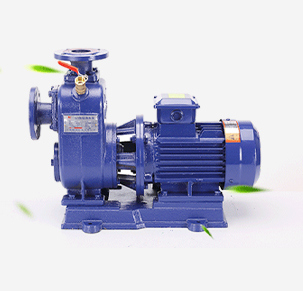Swahili
- Afrikaans
- Albanian
- Amharic
- Arabic
- Armenian
- Azerbaijani
- Basque
- Belarusian
- Bengali
- Bosnian
- Bulgarian
- Catalan
- Cebuano
- Corsican
- Croatian
- Czech
- Danish
- Dutch
- English
- Esperanto
- Estonian
- Finnish
- French
- Frisian
- Galician
- Georgian
- German
- Greek
- Gujarati
- Haitian Creole
- hausa
- hawaiian
- Hebrew
- Hindi
- Miao
- Hungarian
- Icelandic
- igbo
- Indonesian
- irish
- Italian
- Japanese
- Javanese
- Kannada
- kazakh
- Khmer
- Rwandese
- Korean
- Kurdish
- Kyrgyz
- Lao
- Latin
- Latvian
- Lithuanian
- Luxembourgish
- Macedonian
- Malgashi
- Malay
- Malayalam
- Maltese
- Maori
- Marathi
- Mongolian
- Myanmar
- Nepali
- Norwegian
- Norwegian
- Occitan
- Pashto
- Persian
- Polish
- Portuguese
- Punjabi
- Romanian
- Russian
- Samoan
- Scottish Gaelic
- Serbian
- Sesotho
- Shona
- Sindhi
- Sinhala
- Slovak
- Slovenian
- Somali
- Spanish
- Sundanese
- Swahili
- Swedish
- Tagalog
- Tajik
- Tamil
- Tatar
- Telugu
- Thai
- Turkish
- Turkmen
- Ukrainian
- Urdu
- Uighur
- Uzbek
- Vietnamese
- Welsh
- Bantu
- Yiddish
- Yoruba
- Zulu
Telephone: +86 13120555503
Email: frank@cypump.com
Novemba . 21, 2024 04:22 Back to list
sewage ejector pump replacement
Understanding Sewage Ejector Pump Replacement A Comprehensive Guide
Sewage ejector pumps play a crucial role in managing wastewater in homes, especially those situated below the main sewer line. These pumps are essential for transporting sewage waste from lower levels of a home, such as basements or lower sinks, to the main sewer line or a septic system. Over time, like any mechanical system, sewage ejector pumps may require replacement due to wear and tear. This article provides insights into when and how to replace a sewage ejector pump and the factors to consider during the process.
When to Replace a Sewage Ejector Pump
Recognizing the need for replacement is the first step in ensuring your plumbing system functions correctly. Some common signs that indicate your sewage ejector pump may need replacement include
1. Frequent Breakdowns If your pump requires repairs regularly, this is a clear indication that it might be reaching the end of its lifespan. 2. Reduced Performance A noticeable drop in the pump's ability to effectively handle sewage could signal that it can no longer operate efficiently.
3. Unusual Noises Grinding, humming, or repeatedly cycling can indicate issues with the motor or impeller. 4. Constant Running An ejector pump that runs continuously without shutting off can indicate a malfunction, which often warrants replacement.
5. Backups and Flooding When sewage backs up into your basement or lower levels of your home, it may be time to replace the pump to prevent health hazards and property damage.
Choosing a New Sewage Ejector Pump
If you've determined that it's time to replace your sewage ejector pump, you’ll need to consider several factors to ensure you choose the right unit for your needs
1. Pump Capacity Identify the required capacity in gallons per minute (GPM) based on your household's needs. This will help determine the most efficient pump for your setup.
2. Horsepower Rating Pumps typically range from 1/2 HP to 2 HP. Larger homes with multiple bathrooms or heavy water usage may require a more powerful pump.
3. Construction Material Ejector pumps are made from various materials, including thermoplastic and cast iron. Choose a durable material that suits your specific installation environment.
4. Switch Type There are two main types of switches tethered and vertical. Tethered switches are better for deeper pits, while vertical switches are suitable for shallower installations.
sewage ejector pump replacement

5. Warranty and Brand Reputation Consider purchasing a pump from reputable brands that offer solid warranties. This can provide peace of mind regarding the longevity and reliability of the equipment.
Installation Process
Replacing a sewage ejector pump is a task that can be handled by experienced DIY enthusiasts, but hiring a professional plumber is advisable for most homeowners to ensure safety and compliance with local regulations. The typical steps for installation are
1. Power Off Disconnect the power supply to the pump unit.
2. Remove the Old Pump Carefully detach the discharge pipe and remove the old pump from the pit.
3. Prepare and Install the New Pump Ensure the new pump is correctly positioned in the basin, with all fittings properly secured. Attach the discharge pipe, ensuring there are no leaks.
4. Reconnect the Power Once everything is in place, restore power to the unit.
5. Test the Pump Finally, test the new sewage ejector pump to ensure it functions correctly and efficiently.
Maintenance Tips
To extend the life of your new sewage ejector pump, regular maintenance is essential
- Inspect the pump periodically for wear and clogs. - Ensure the sump pit is clean and free of debris. - Test the pump every few months to ensure it starts and operates properly.
Conclusion
Sewage ejector pumps are integral to maintaining a functional and hygienic home environment. Recognizing the signs of pump failure and knowing when to replace your unit can save you significant time, money, and hassle. By choosing the right replacement pump and ensuring proper installation, you’ll ensure that your home's wastewater management remains efficient for years to come. Always consider professional assistance to guarantee a safe and effective installation.
-
High-Performance Air Pumps for Sand & Gravel | Efficient Transport
NewsAug.03,2025
-
ISG Series Vertical Pipeline Pump - Chi Yuan Pumps Co., LTD.|Energy Efficiency, Corrosion Resistance
NewsAug.03,2025
-
ISG Series Pipeline Pump - Chi Yuan Pumps | Energy Efficiency&Compact Design
NewsAug.03,2025
-
ISG Series Vertical Pipeline Pump - Chi Yuan Pumps Co., LTD.|High Efficiency, Low Noise, Durable
NewsAug.02,2025
-
ISG Series Vertical Pipeline Pump - Chi Yuan Pumps | High Efficiency, Low Noise
NewsAug.02,2025
-
ISG Series Vertical Pipeline Pump- Chi Yuan Pumps Co., LTD.|High Efficiency&Compact Design
NewsAug.02,2025










